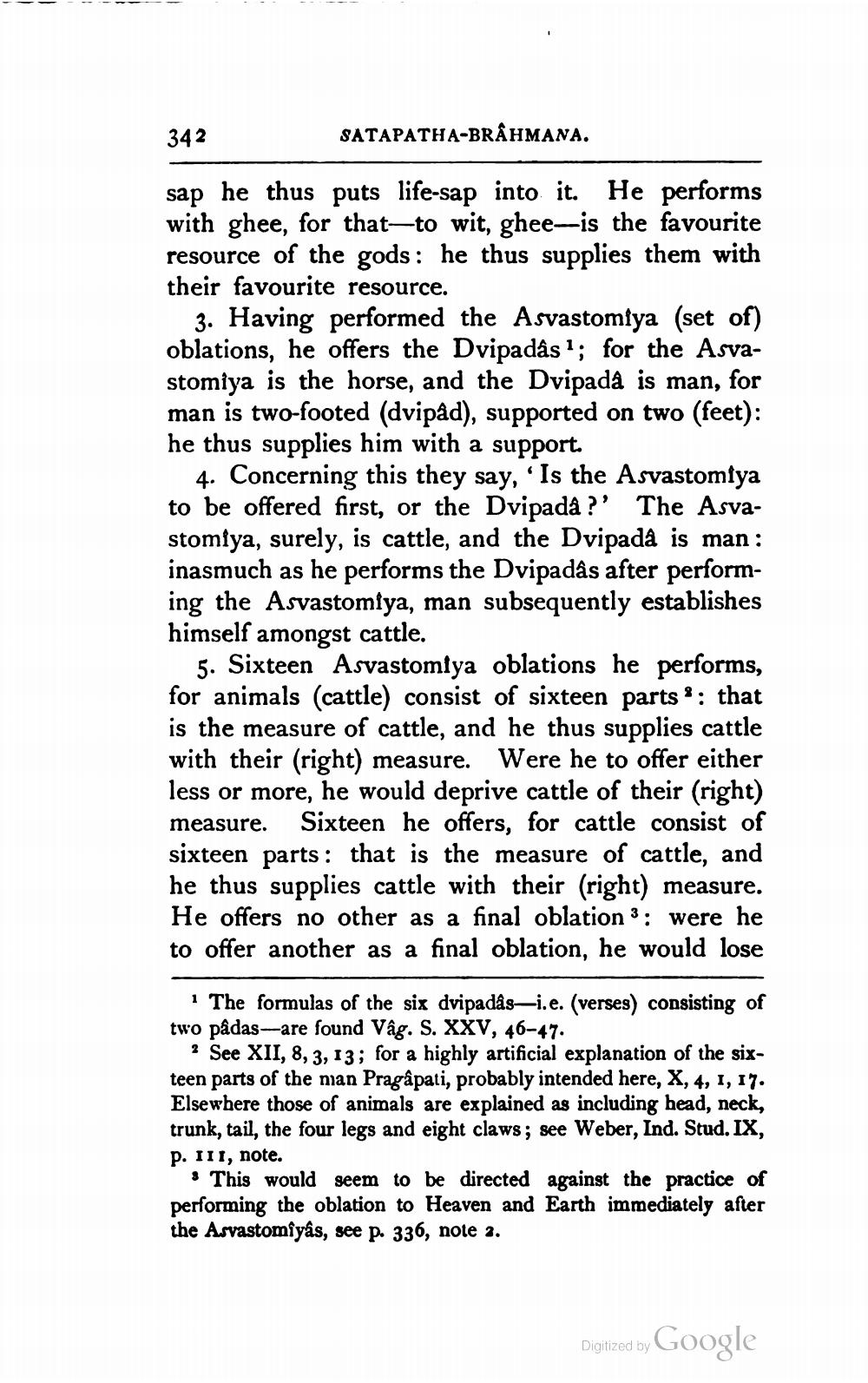________________
-
-
--
--
342
SATAPATHA-BRAHMANA.
sap he thus puts life-sap into it. He performs with ghee, for that—to wit, ghee-is the favourite resource of the gods : he thus supplies them with their favourite resource.
3. Having performed the Asvastomiya (set of) oblations, he offers the Dvipadas 1; for the Asvastomiya is the horse, and the Dvipada is man, for man is two-footed (dvipad), supported on two (feet): he thus supplies him with a support
4. Concerning this they say, 'Is the Asvastomiya to be offered first, or the Dvipada ?' The Asvastomiya, surely, is cattle, and the Dvipada is man: inasmuch as he performs the Dvipadâs after performing the Asvastomiya, man subsequently establishes himself amongst cattle.
5. Sixteen Asvastomiya oblations he performs, for animals (cattle) consist of sixteen parts 8: that is the measure of cattle, and he thus supplies cattle with their (right) measure. Were he to offer either less or more, he would deprive cattle of their (right) measure. Sixteen he offers, for cattle consist of sixteen parts: that is the measure of cattle, and he thus supplies cattle with their (right) measure. He offers no other as a final oblation 3: were he to offer another as a final oblation, he would lose
1 The formulas of the six dvipadás—i.e. (verses) consisting of two pâdas--are found Vâg. S. XXV, 46-47.
? See XII, 8, 3, 13; for a highly artificial explanation of the sixteen parts of the man Pragapati, probably intended here, X, 4, 1, 17. Elsewhere those of animals are explained as including head, neck, trunk, tail, the four legs and eight claws; see Weber, Ind. Stud. IX, p. 111, note.
This would seem to be directed against the practice of performing the oblation to Heaven and Earth immediately after the Asvastomiyâs, see p. 336, note 3.
Digitized by Google




